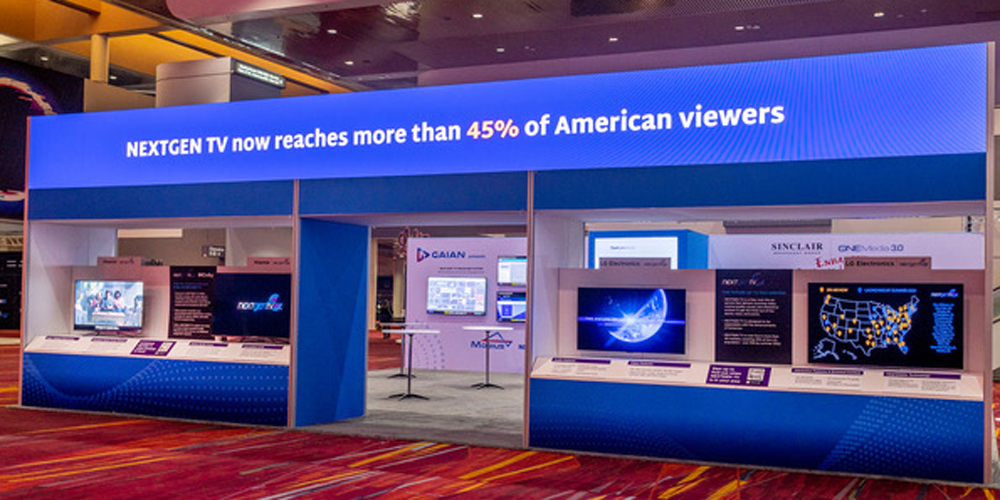
Vendors Eager For ‘Reimagined’ NAB Show

For the first time in three years, broadcasters and the technology vendors that serve them will gather as an industry, as the NAB Show returns to Las Vegas this April 23-27 after the 2020 and 2021 editions were canceled due to the COVID-19 pandemic. (The exhibit floor opens Sunday, April 24).
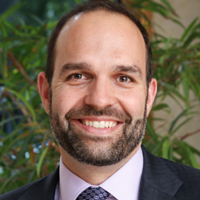
Curtis LeGeyt
While it’s the same town and the same time of year, NAB 2022 will feel very different than previous NABs that routinely drew over 90,000 attendees and 1,600-plus exhibitors. For one, it will be significantly smaller, which is no surprise given the continued impacts of COVID (attendees still have to show proof of vaccination or a negative COVID test result to get their badge). As of Wednesday, NAB CEO Curtis LeGeyt said both exhibitors and registrations have “really ramped up” in the last few weeks, and he was now expecting between 950 and 1,000 exhibitors and was “optimistic” for an attendance of around 60,000.
That attendance would represent a 35% drop from the last NAB, which is consistent with predictions from vendors with which TVNewsCheck spoke. But it would represent far healthier attendance than the 2022 CES show, which suffered a 70% drop in attendance from the January 2020 CES, down from 170,000 to 45,000.
“We couldn’t be happier about where things are landing right now,” LeGeyt says. “What we’ve been most focused on is ensuring that anyone that comes out there is going to have an experience that’s different than the NAB show they remembered from 2019 or before. We’ve reimagined the format of this. And that it will be something where they say, ‘I remember why it’s so important to be in-person at a trade show.’”
New Show Geography
The overall exhibit space at the Las Vegas Convention Center will be smaller, with a total footprint of around 500,000 square feet compared to just under one million in 2019. And it will have a new geography, as NAB is no longer using the cavernous South Upper and Lower Halls, which were located a considerable walking distance from the Central and North Halls. Instead, the show is moving into the gleaming new West Hall built across Paradise Road from North, where a parking lot was previously. The three halls are now served by the Las Vegas Convention Center Loop, a system of underground tunnels created by Tesla CEO Elon Musk. Tesla offers free rides between halls in its electric vehicles.
The smaller footprint isn’t just due to COVID. Several large vendors said after the 2019 show that they were reducing the size of their booths, or had already done so, as many of the products they sell have shifted from physical hardware to software-based solutions. And since many of those software-centric products can be demonstrated remotely — a capability vendors leaned on heavily throughout the pandemic — vendors were also looking to get more involved in conference sessions to get a better ROI on their NAB spend.
In conjunction with the new floorplan, NAB has reorganized the 2022 exhibition and companion conference into four “content pillars”: Create, Connect, Capitalize and Intelligent Content. The “Create” pillar will be located across Central and part of North Hall, Capitalize across part of North and Connect and Intelligent Content will be in the West Hall. Many anchor exhibitors have moved to new locations, including several post-production companies that had previously been in South relocating to North.
Schedule Changes
Another departure for NAB this year is the schedule. For the first time the show floor will be open on Sunday, following a decision in early 2019 to rejigger the exhibition to run from Saturday through Wednesday instead of Monday through Thursday with the hope of boosting attendance. The idea was that one didn’t have to “eat up an entire workweek” to attend NAB, LeGeyt says.
When the change was first announced, the reaction among exhibitors was mixed, with many vendors suggesting that Wednesday would simply become the “new Thursday,” historically a sleepy day on the NAB Show floor. Of course, after two years of no large trade shows and an industry that has been transformed by remote work due to the pandemic, it will be difficult to assess whether the schedule change was originally a good idea or not.
For his part, LeGeyt says he hadn’t heard much negative feedback about the schedule switch. Grass Valley CMO Neal Maycock agrees.
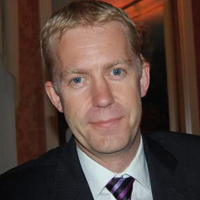
Neal Maycock
“I think people have forgotten what days it used to be on,” Maycock says. “No one seems worried about that anymore. It’s funny to think that was a big controversial thing a couple years ago. Now, it’s like, ‘Well, the show’s happening. Who cares what days it is?’”
Smaller, But More Serious Crowds
Maycock says he was struggling to get a sense of what attendance might actually be, but that if it reached even 50% of 2019 that would be a “very good result.” He says key customers are continuing to book meetings, even though non-COVID events like the Warner Bros.-Discovery merger are keeping some personnel away. Compared to the fall 2021 show that was canceled, Maycock also sees that more senior executives, rather than junior staff, are booking meetings with Grass Valley, which is emphasizing its cloud-based based production platform and various third-party product integrations in its booth.
“We’ve already got enough appointments to make it worth going,” he says.
Bitcentral CEO Steve Petilli says he was a bit concerned about attendance on Sunday, which is shaping up as a travel day for some customers. But Petilli has been able to secure appointments throughout the show with all of Bitcentral’s key customers, and he says that a smaller, less congested NAB might not be a bad thing.

Steve Petilli
“That’s one of the things that we’re hoping, is that it’s not as frenetic,” Petilli says. “I think it’s much more useful as a show if we don’t have crowds of people in the booth who are elbowing each other, and not enough meeting rooms to really sit down and have time with the customers. I think the people who really need to talk to us and are serious are going to be showing up, and we’re going to get a lot less looky-loos.”
About a month ago, Sony was predicting much lighter attendance for NAB ’22 than past shows but has seen booth appointments pick up in the last couple weeks, says John Studdert, VP of media solutions for Sony Electronics. Studdert says that most station groups were “going in full force” while attendance from networks was more mixed, which could be attributed to reorganizations like the one occurring at Warner Bros. Discovery as well as a shift in focus to new streaming efforts.
“There’s a lot of transformation taking place,” he says.
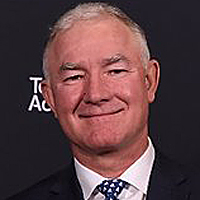
John Studdert
Studdert is seeing lighter attendance from customers in Europe and Asia due to the ongoing impacts of COVID. But he expects that U.S. attendance will be about 70% of pre-pandemic levels.
Sony will be in its familiar Central Hall location with a footprint comparable in size to previous years. Key themes will be the shift to IP-based SMPTE-2110 compliant operations; REMI production for live events; virtual production; and various cloud-based solutions.
“I think the industry is continuing to wait for the [cloud] toolsets to mature, especially on the live side,” Studdert says. “At the same time IP is continuing to mature as well. So, I think those two could either work in concert, or to some degree compete with each other.”
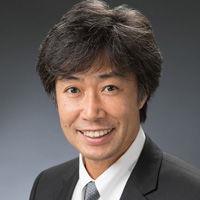
Satoshi Kanemura
Another Japanese vendor that will be highlighting IP solutions is FOR-A, which has actually increased the size of its booth to demonstrate an end-to-end software-defined production chain. Satoshi Kanemura, president and COO of FOR-A America, says that in-person shows are particularly important for small-to-mid-size vendors like FOR-A. He sees a similar value placed on attendance from customers, with some network customers skipping the show but a lot of “mid-tier and low-tier” broadcasters still making the trip.
Overseas Impact
Like Sony, most vendors expect attendance from European and Asia-Pacific customers to be down.
IP transmission vendor Net Insight, which is based in Sweden, is sending about the same number of people to NAB 2022 as 2019. But that’s because it has grown its U.S. operation. Fewer executives are coming from Europe, and the company is also seeing fewer European customers making the trip as well. Per Johansson, head of sales, Americas for Net Insight, says that a few customers from large media companies just canceled meetings in the past week due to new corporate-wide COVID restrictions.

Per Johansson
Net Insight had already downsized its booth somewhat from 2019 in its planning for last year’s canceled show. The company has also decided to virtualize several demonstrations in its booth this year that it initially planned to do with equipment in the booth, by remotely controlling systems back in Sweden. By doing so it is also showing that it can keep up with the needs of customers who are increasingly reliant on “at-home” or REMI-style productions.
“It’s going to be less and less equipment out at the edges in the future, and it shows we’re trending in that way,” Johansson says.
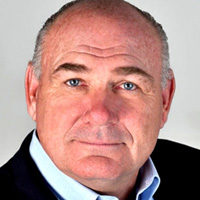
Van Duke
Master control and playout vendor Playbox NEO has seen strong response from customers and is forecasting NAB 2022 as a “purchasing show,” says Van Duke, U.S. director of operations for Playbox NEO. But he isn’t seeing many international customers make the trip and thinks it will be a U.S.-dominated show. Like other vendors, he says that Wednesday looks to be very quiet, and wonders why NAB hadn’t cut back on the total show hours.
“I think Wednesday is going to be dead,” Duke says.
Taking Stock Of Next-Gen TV
Sinclair Broadcast Group is bringing “several dozen” and maybe as many as 50 to 60 employees to Las Vegas, says SVP of Advanced Technology Mark Aitken. The continued rollout of the ATSC 3.0 transmission system is a big focus at NAB for Sinclair, which has been transmitting 3.0 signals from its NBC affiliate KSNV Las Vegas for the past two years. During the show, it will be demonstrating 3.0 datacasting applications, including “GPS enhancement” for drone delivery of packages outside the convention hall, as well as 4K HDR programming.
Aitken says NAB 2022 is key for broadcasters rolling out the new standard.

Mark Aitken
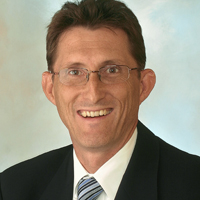
Ralph Bachofen
“During COVID, a lot of our folks haven’t seen [the technology],” Aitken says. “It’s been difficult putting your hands on gear and obviously having those face-to-face conversations. We’re making the best of the show.”
One of 30-plus vendors demonstrating 3.0 technology at NAB is Triveni Digital, which makes datacasting solutions and test and measurement systems for ATSC 3.0 transmission. Triveni has already booked a number of meetings at its new location in the West Hall and is expecting “really good traffic,” says Triveni VP of Sales and Marketing Ralph Bachofen.
“It sounds like all the big guys are coming,” Bachofen says, though he noted that overall attendance from PBS member stations may be down now that PBS no longer holds a technical conference before the show.
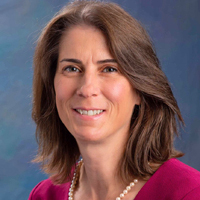
Madeleine Noland
The ATSC booth is anchoring the “Future of Delivery” area in the West Hall, which ATSC President Madeleine Noland describes as “drop-dead gorgeous.” Noland is “very excited” about prospective attendance for NAB, which includes significant delegations from Korea, Brazil and Jamaica.
“To be honest, it feels like pre-COVID when it comes to how preparations are going,” Noland says. “The amount of excitement that’s building, the number of people who would like to meet, the amount of activity in our booth as well as up and down the show floor.”
With 3.0 signals now covering 50% of the country and topping 80% predicted by year-end, Noland thinks the rollout is going very well, particularly considering the logistical challenges that COVID-19 posed throughout 2020. Between set-makers Sony, LG, Samsung and Hisense there are now over 120 NextGen TV models available.
At CES, attendees wanted to see 3.0 set-top boxes and other peripherals, Noland says, and she is happy that a number of them will be demonstrated at NAB. The other theme that arose was side-by-side comparison of ATSC 1.0 and 3.0 broadcasts, and that is something that will also be shown in the ATSC booth.
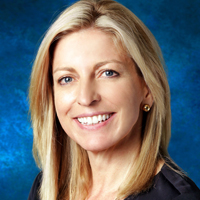
Anne Schelle
Besides datacasting and UHD, interactivity is another key benefit of the 3.0 standard. The Run3 broadcast app developed by E.W. Scripps will also be on display in the ATSC booth, says Anne Schelle, managing director of broadcast consortium Pearl TV, as well as in private demos at the Wynn hotel.
“We’re focused on the consumer story, video, audio and interactive,” Schelle says. “You will see some real examples of the broadcast application and some recent developments in ad technology with lead generation and monetization. We’ll be showcasing that.”


































Comments (0)